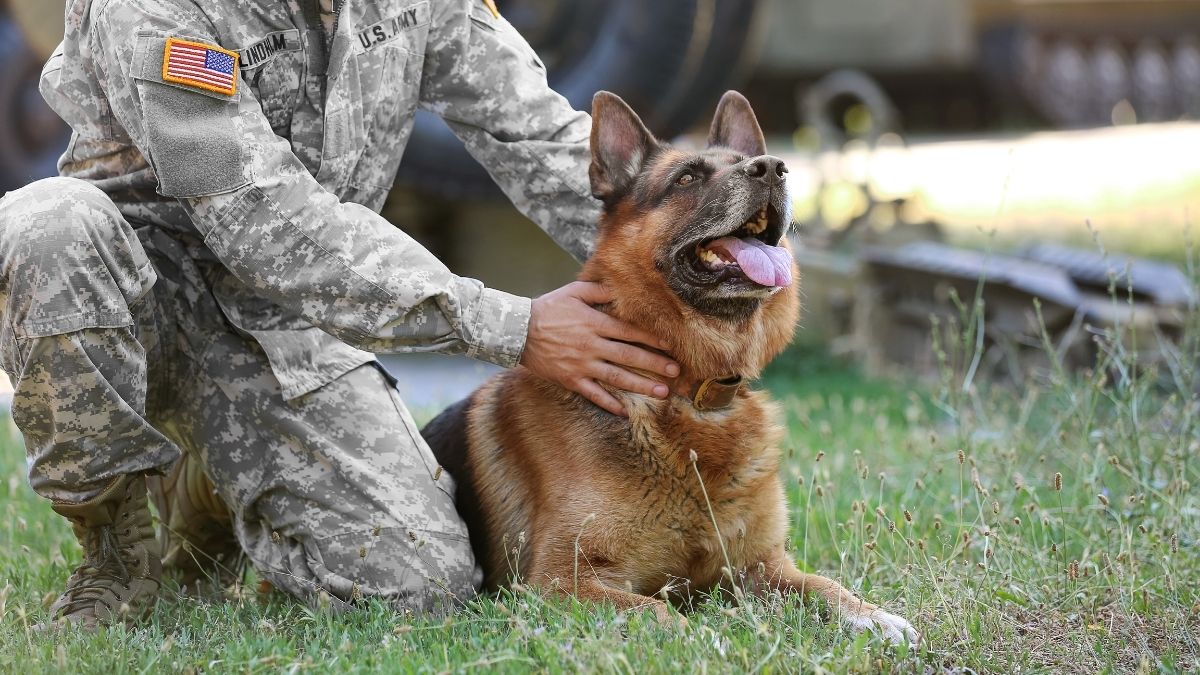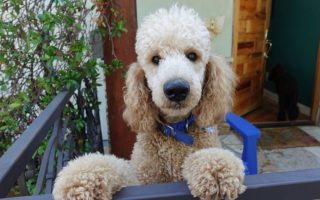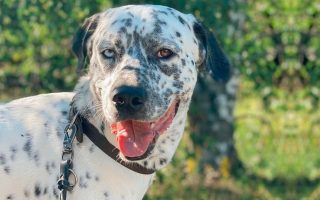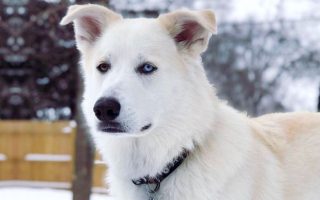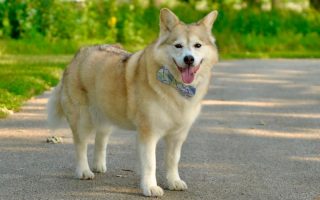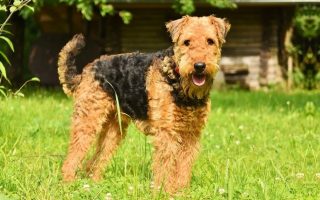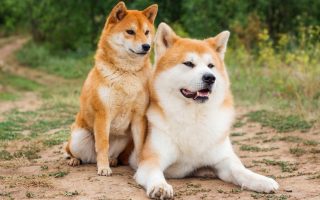Dogs have been undeniable support to humanity, far more than many other household pets.
Amidst all the services they’ve rendered, one, in particular, makes them deserving of awards. We’re talking about the military force.
Dogs were integral parts of the 1st and 2nd World Wars. However, these weren’t the only wars they partook in.
Throughout civilizations of old dating back to 600 B.C., military dog breeds have fought side by side with warriors and also served as emotional support during the woes of combat.
In the 2nd World War (more than the 1st), the US military recognized the asset dogs are and had many of them partake in battles.
Some of these military dogs saved soldiers and even gave their own lives as sacrifices.
We’ll be taking a look at the 15 best military dog breeds that are often picked to serve as brothers in paws.
Even after the Second World War and the evolution of technology, these army dogs still accompany the military on missions and the resolution of minor conflicts.
Best Military Dog Breeds – Top Army Dogs That Serve
1. Belgian Malinois
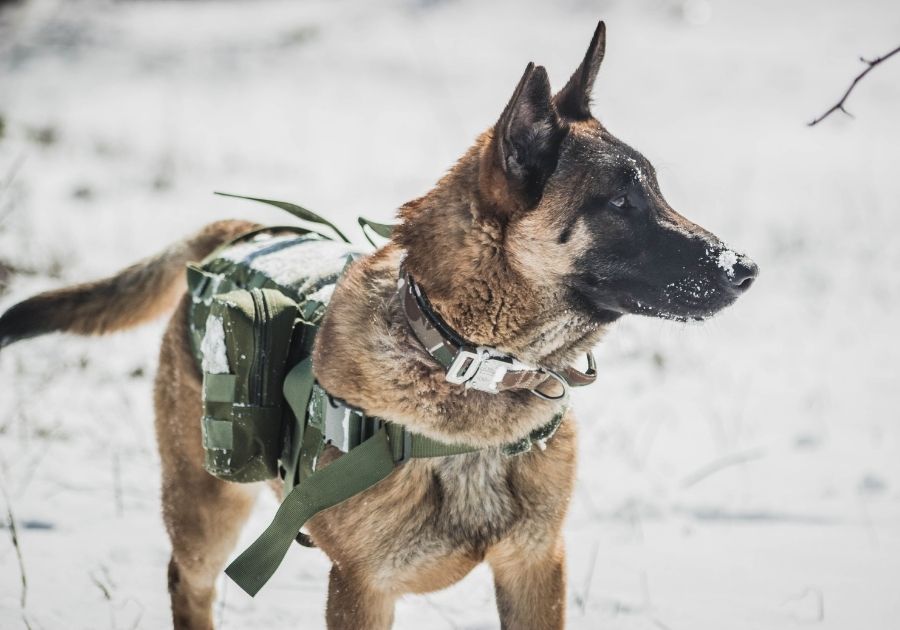
Breed Facts
- Group (AKC): Herding Group
- Height: 22 to 26 inches
- Weight: 40 to 80 pounds
- Temperament: Smart, obedient, protective
- Life Expectancy: 12 to 14 years
- Origin: Belgium
The Belgian Malinois is like a brother (or at least a close cousin) of the German Shepherd.
This breed first joined the military during the First World War where it served as messengers and helped locate wounded soldiers.
Though not as popular as the German Shepherd, it has proven to have its strengths.
Today, the Belgian Malinois still serves in the military. In some cases, it is preferred to the German Shepherd.
An example is the Navy SEAL that opts for the Belgian Malinois because of its lightness.
One such Malinois was Cairo the Seal dog, which played a role in tracing Osama Bin Laden in 2011.
2. German Shepherd
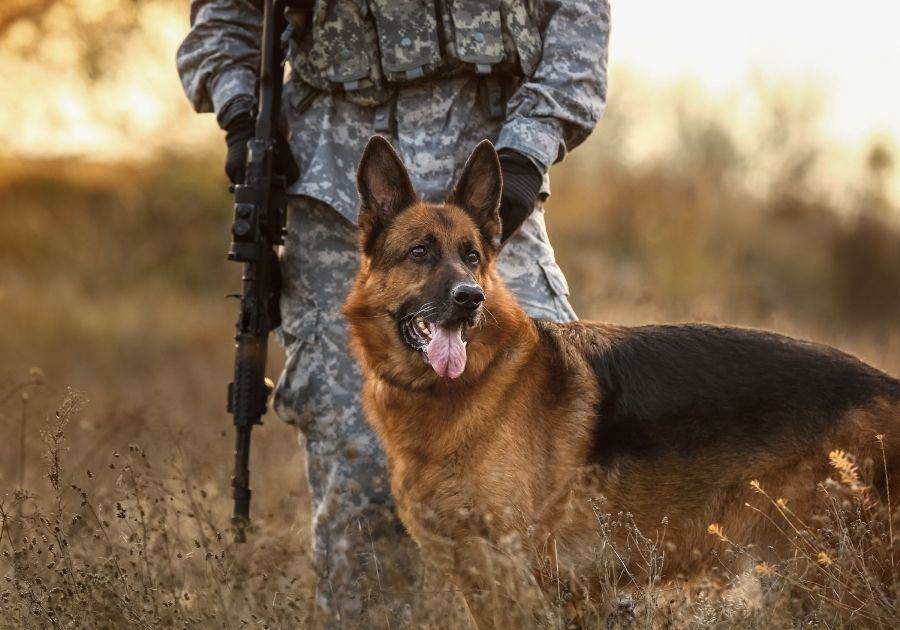
Breed Facts
- Group (AKC): Herding Group
- Height: 22 to 26 inches
- Weight: 75 to 95 pounds
- Temperament: Intelligent, stubborn, curious
- Life Expectancy: 10 to 14 years
- Origin: Germany
Under any subject of dogs in the military or the police force, you’re likely to see the German Shepherd dog included. This reputation is tied down to its history.
When Captain Max von Stephanitz developed the German Shepherd, his first intention was for the breed to be a shepherd dog.
However, industrialization in Germany led to a change of plan.
That opened the military chapter of the German Shepherd in the German army.
During the first world war, the GSD played the role of messenger, guard, rescuer, Red Crowd Dog, etc.
During the Second World War, the Allied forces employed this breed too.
3. Dutch Shepherd
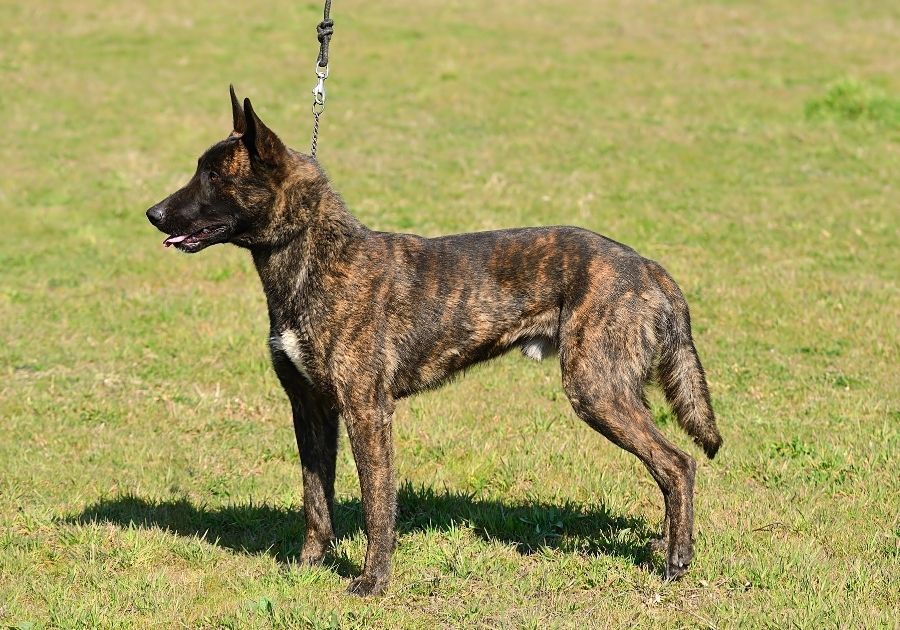
Breed Facts
- Group (AKC): Foundation Stock Service
- Height: 12 to 15 inches
- Weight: 50 to 70 pounds
- Temperament: Affectionate, reliable, alert
- Life Expectancy: 12 to 15 years
- Origin: Netherlands
The Dutch Shepherd doesn’t resemble the German Shepherd as much as the Belgian Malinois, but all three were bred for similar purposes.
As such, the Dutch Shepherd also found itself standing side by side with soldiers.
They served under the German army in the Second World War and have since been integrated into the United States military alongside the German Shepherd and the Belgian Malinois.
This breed also serves as guides for the blind, police dogs, and companions. The Dutch Shepherd is uncommon but gifted.
4. Rottweiler
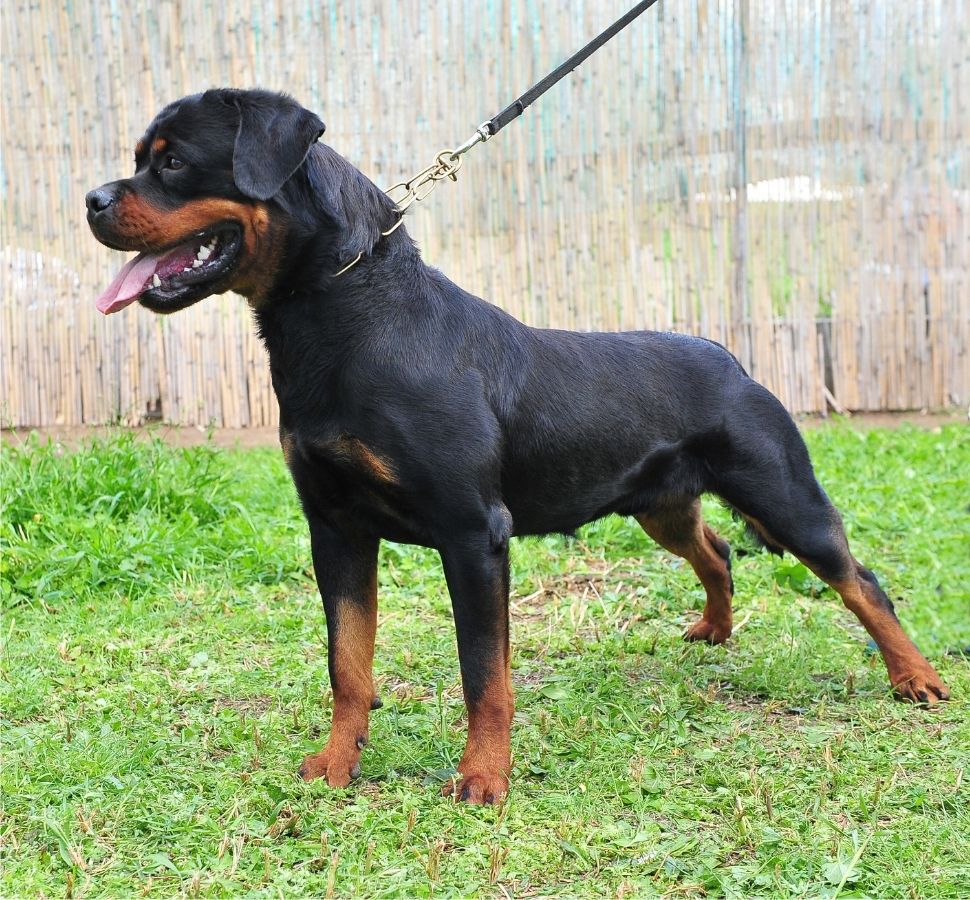
Breed Facts
- Group (AKC): Working Group
- Height: 22 to 27 inches
- Weight: 80 to 135 pounds
- Temperament: Loving, loyal, confident
- Life Expectancy: 9 to 10 years
- Origin: Germany
The Rottweiler has a striking and intimidating appearance that gives it a good edge in its guard dog duties. It first got into the military during the 1st World War.
During that period, it served as a guard, and also alerted troops when it noticed the enemy troop approaching.
There were also unconfirmed reports that the Rottweiler participated in intimidation and interrogation. With its frightening looks, that wouldn’t be surprising.
Today, the Rottweiler isn’t a major part of the military as it used to be, but it continues to play its role as a guard dog in households.
This breed also serves in the police force.
Dive Deeper:
K9 Dog Breeds: 14 Best Police Dog Breeds Who Serve
Though regarded as one of the most dangerous dog breeds out there, Rottweiler’s loyalty and confidence are strong. These dogs can die for their owners.
5. Labrador Retriever
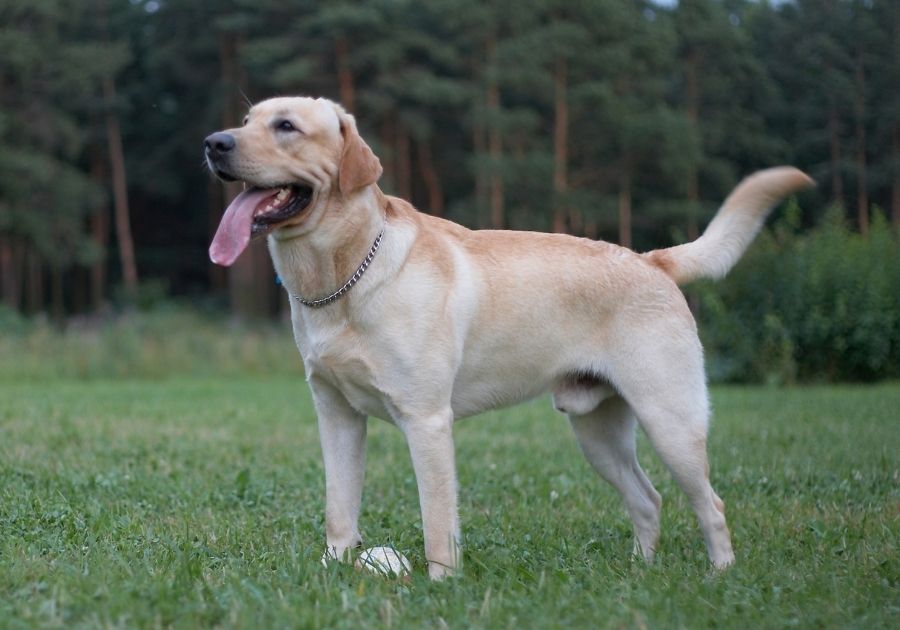
Breed Facts
- Group (AKC): Sporting Group
- Height: 21 to 24 inches
- Weight: 55 to 85 pounds
- Temperament: Intelligent, kind, agile
- Life Expectancy: 10 to 12 years
- Origin: Canada
The Labrador Retriever is the most popular dog breed in the United States and started as a retriever in Newfoundland, Canada before it got into Great Britain and the United States.
Besides topping charts and catching fish, the Labrador Retriever also served in the Second World War.
Unlike the Rottweiler, Labradors aren’t good guards. They were employed as military working dogs in tracker teams where their sense of smell came in handy.
Labradors on the battlefield were trained to detect explosives, find wounded soldiers, and even pick up the scent of the enemy troop.
The wonderful temperament of the Labrador Retriever also made it a therapy dog of sorts for soldiers, a role it still plays today.
6. Doberman Pinscher
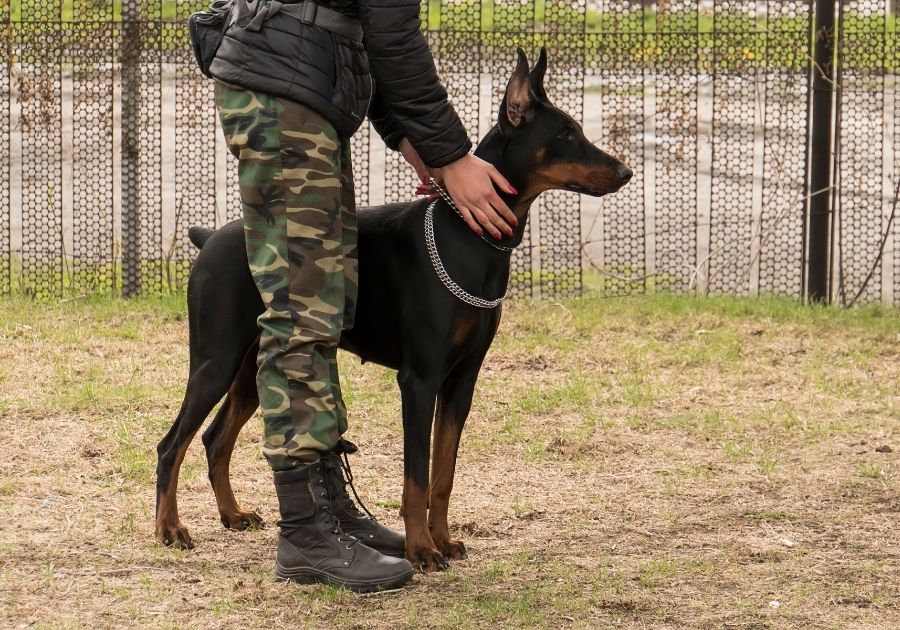
Breed Facts
- Group (AKC): Working Group
- Height: 24 to 28 inches
- Weight: 60 to 80 pounds
- Temperament: Intelligent, fearless, energetic
- Life Expectancy: 10 to 13 years
- Origin: Germany
The Doberman Pinscher was bred by Louis Dobermann, a tax collector, to guard him as he went about his duties.
As such, the Doberman Pinscher is as excellent a guardian as the Rottweiler and caught the interest of the military soon enough.
Dobbies served as sentries, detection dogs, and messengers in the Second World War. They also helped locate wounded soldiers.
During the same war, the US Marines formed a group of Doberman Pinschers known as the “devil dogs.”
These dogs were known for their heroism; an example of which is Cappy that helped save the lives of many soldiers during the Battle of Guam.
7. Yorkshire Terrier
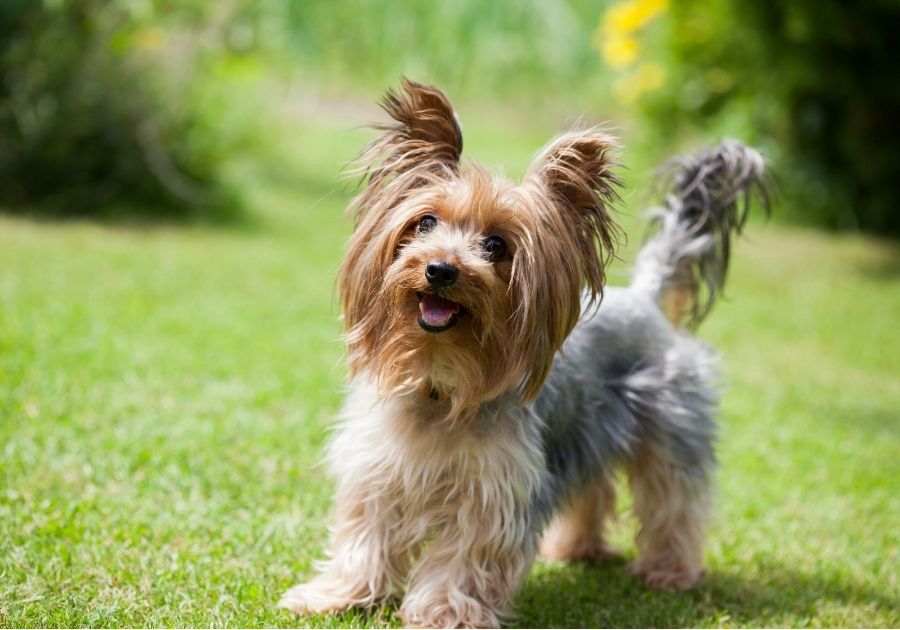
Breed Facts
- Group (AKC): Toy Group
- Height: 8 to 9 inches
- Weight: 4 to 6 pounds
- Temperament: Intelligent, courageous, independent
- Life Expectancy: 12 to 15 years
- Origin: England
With its tiny size, the Yorkshire Terrier seems more fitting for a lady’s purse than the harshness of a battlefield.
Yet, the Yorkshire Terrier played some supportive roles to the allied forces in the Second World War.
One particular example is a Yorkie dog named Smoky, which helped lessen the workloads of some soldiers.
Today, you’d hardly find the Yorkshire Terrier prancing around with soldiers, but the courage it had during the Second World War remains intact.
It won’t take long before you discover that the Yorkshire Terrier acts like a big dog in a small body.
Its boldness and feisty Terrier nature make it one of the most popular toy dogs.
8. Bloodhound

Breed Facts
- Group (AKC): Hound Group
- Height: 23 to 27 inches
- Weight: 80 to 110 pounds
- Temperament: Gentle, affectionate, stubborn
- Life Expectancy: 11 to 15 years
- Origin: United Kingdom, France, Belgium
Bloodhounds are highly respected for their strong sense of smell, and as a scenthound that is its greatest strength.
This sense of smell got it into the military and even the police force, and it still partakes in search and rescue missions today.
As military personnel, the Bloodhound played a sniffing role similar to that of the Labrador. This army dog could also detect drugs and weapons.
These days, the Bloodhound is less popular than it used to be.
This decline in popularity largely happened long after the American civil war, when Harriet Beecher Stowe wrote Uncle Tom’s Cabin.
There, the Bloodhound was depicted as a savage beast, a far cry from this breed’s gentle nature.
9. Mastiff
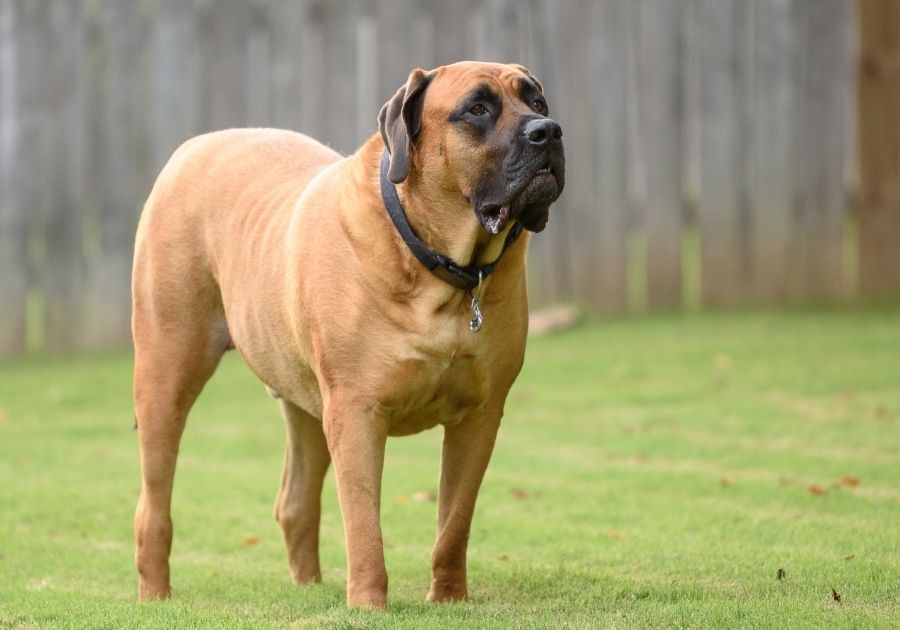
Breed Facts
- Group (AKC): Working Group
- Height: 27 to 32 inches
- Weight: 130 to 220 pounds
- Temperament: Protective, dignified, affectionate
- Life Expectancy: 6 to 10 years
- Origin: England
The Mastiff goes back to Ancient Rome and other old civilizations, like 2,500 years ago.
It began its combat career during that period and accompanied Romans, Greeks, Persians, and some other people into battle. The Mastiff attacked just as much as it defended.
In modern times, however, the Mastiff is more in households and less on the battleground.
The traits that made the Mastiff a fighting dog have since been bred out of it, possibly to prevent aggressive behaviors. This breed is now a gentle giant.
10. Boxer

Breed Facts
- Group (AKC): Working Group
- Height: 21 to 25 inches
- Weight: 60 to 70 pounds
- Temperament: Friendly, devoted, fearless
- Life Expectancy: 10 to 12 years
- Origin: Germany
Like Rottweilers, Boxer dogs have an intimidating appearance. They don’t share the same notoriety as Rotties, though.
Their playful nature and sense of humor have made them quite popular as good family dogs, and their loyalty ticks the guard dog criteria.
Modern-day Boxers don’t accompany soldiers often, but they once did under the German force.
During the First World War, they worked as messenger dogs, and they were also part of the Second World War.
Their popularity was solidified after the Second World War.
11. Airedale Terrier
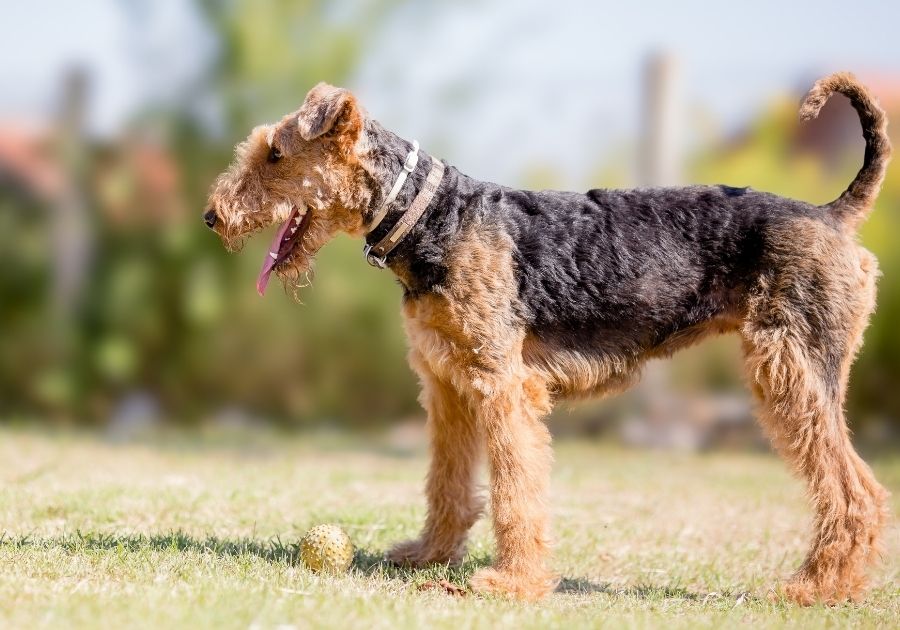
Breed Facts
- Group (AKC): Terrier Group
- Height: 21 to 23 inches
- Weight: 40 to 65 pounds
- Temperament: Alert, confident, friendly
- Life Expectancy: 10 to 13 years
- Origin: United Kingdom
The Airedale Terrier is the largest Terrier there is, and thus it was given the name “King of Terriers”.
This breed served as a Red Cross dog, sentry, and was a messenger. It also has a war story tied to its name, going back to the First World War.
An Airedale named Jack made history after he went through enemy lines to deliver a message to the British Headquarters.
He took on a huge risk and eventually lost his life a few minutes after the mission, but the message he delivered saved the battalion.
This alone accounts for the bravery of the Airedale Terrier dog breed.
12. Alaskan Malamute
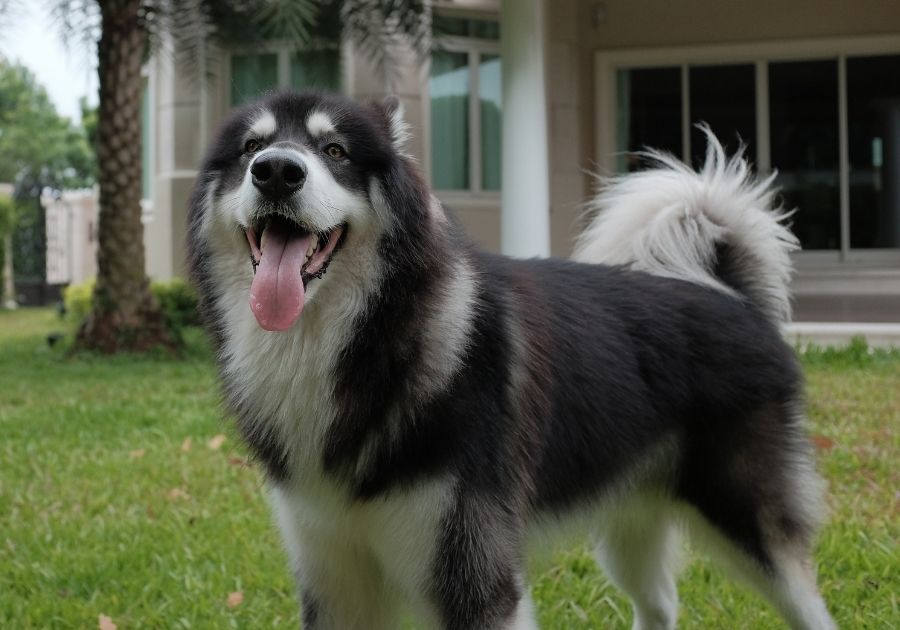
Breed Facts
- Group (AKC): Working Group
- Height: 23 to 25 inches
- Weight: 75 to 100 pounds
- Temperament: Devoted, friendly, affectionate
- Origin: Alaska
- Life Expectancy: 12 to 15 years
The Malamute has a very close resemblance to wolves, and they were even used as wolves in some movies.
It was bred to be a sled dog, and its size enabled it to carry loads over a long distance.
In addition to dragging load for people, the Alaskan Malamute pulled sleds during World War 2 and were taught how to parachute.
These dogs served as an efficient transport system during search and rescue missions across undesirable terrains.
The Malamute doesn’t pull sleds as much as before, but it is a good family dog.
13. Siberian Husky

Breed Facts
- Group (AKC): Working Group
- Height: 20 to 23 inches
- Weight: 35 to 60 pounds
- Temperament: Friendly, alert, outgoing
- Life Expectancy: 12 to 15 years
- Origin: Siberia
The Siberian Husky was developed to be a sledder, just like the Alaskan Malamute. Husky isn’t as big as a typical Malamute, however.
Its sled dog duties were used in World War 2 by Allied forces.
The Siberian Husky helped transport people in terrains where other forms of transport were useless.
It even played a role in Pearl Harbor alongside the Alaskan Malamute.
The US Army no longer has much need for the Siberian Husky, but it still is a feature in the Russian military.
It is also a companion in many American homes. Its beauty and friendly personality make it one of the most popular dogs in the United States.
Dive Deeper:
13 Best Sled Dog Breeds That Do More Than Pulling Sleds
14. Giant Schnauzer
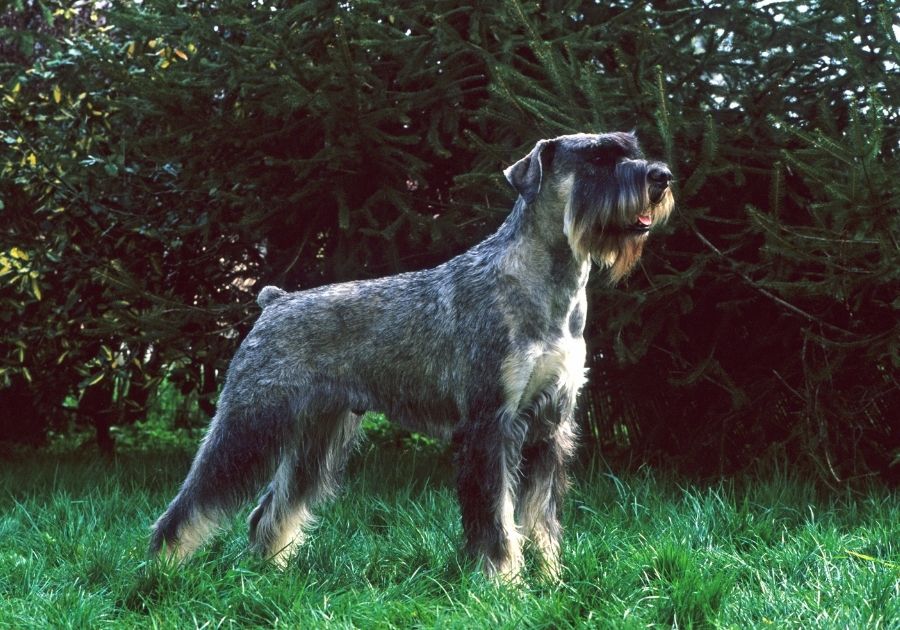
Breed Facts
- Group (AKC): Working Group
- Height: 23 to 27 inches
- Weight: 55 to 80 pounds
- Temperament: Powerful, loyal, kind
- Life Expectancy: 10 to 12 years
- Origin: Germany
The Giant Schnauzer is one of three Schnauzers and they’re not under the same breeds.
Rather, they are recognized as distinct. As the name implies, the Giant Schnauzer is the biggest of the three.
This breed served in the German army in both world wars. It was a sentry and also used as a tracking dog.
During the Second World War, the Giant Schnauzer was also used as an Air force dog, as well as in 1980.
Now, they serve more as companions for civilian families.
15. Border Collie

Breed Facts
- Group (AKC): Herding Group
- Height: 18 to 22 inches
- Weight: 30 to 45 pounds
- Temperament: Keen, responsive, tenacious
- Life Expectancy: 12 to 15 years
- Origin: United Kingdom
Border Collie is considered the most intelligent dog in the United States in the aspect of Work and Obedience intelligence.
This makes it a good household pet and a service dog. For this reason, Border Collies were drafted into the military as army dogs.
They played similar roles to many others on this list. Now, the Border Collie no longer serves in the military.
This breed fills up American homes as pets and thrives in an environment with enough work to do or physical activities that can help release its pent-up energy.
What breed of dog is most used by the military?
Many breeds have served in the military, especially during the two World Wars.
In modern times, however, the German Shepherd is the breed most associated with the military.
They aren’t the only ones still in the military force today, though. The Belgian Malinois and Labrador Retriever are other examples.
What breed is no longer used by the military?
Some breeds that were once combat dogs have been dropped and now serve other functions in society, including that of companionship.
The Siberian Husky and Alaskan Malamute are two examples of dogs that are no longer used by the military.
What is a military dog called?
The military dog has no specific name, but specially trained ones go by different names.
The group of Doberman Pinschers that served in the Second World War under the US Marines were called “devil dogs”.
Specially trained dogs used by teams like Navy SEAL are called MPC: Multi-Purpose Canines.
Which military dog breed is very smart?
The Border Collie is considered the smartest dog in the United States and was used by the military in the wars.
It isn’t the only smart army dog, however. The Labrador Retriever and German Shepherds are also smart dogs.
Do military dogs outrank their handlers?
All military dogs are classified under NCO—Non Commissioned Officers.
As a general rule, they are ranked higher than the officer handlers. This prevents the handlers from maltreating them.
Final Thoughts
If you’re a dog person, be proud!
Dogs have been an important part of human history, and the numerous services they have rendered will remain unforgotten in our records.
Just as we salute the valiant men who risk their lives daily, military dog breeds who are brothers in paws deserve our respect too.

